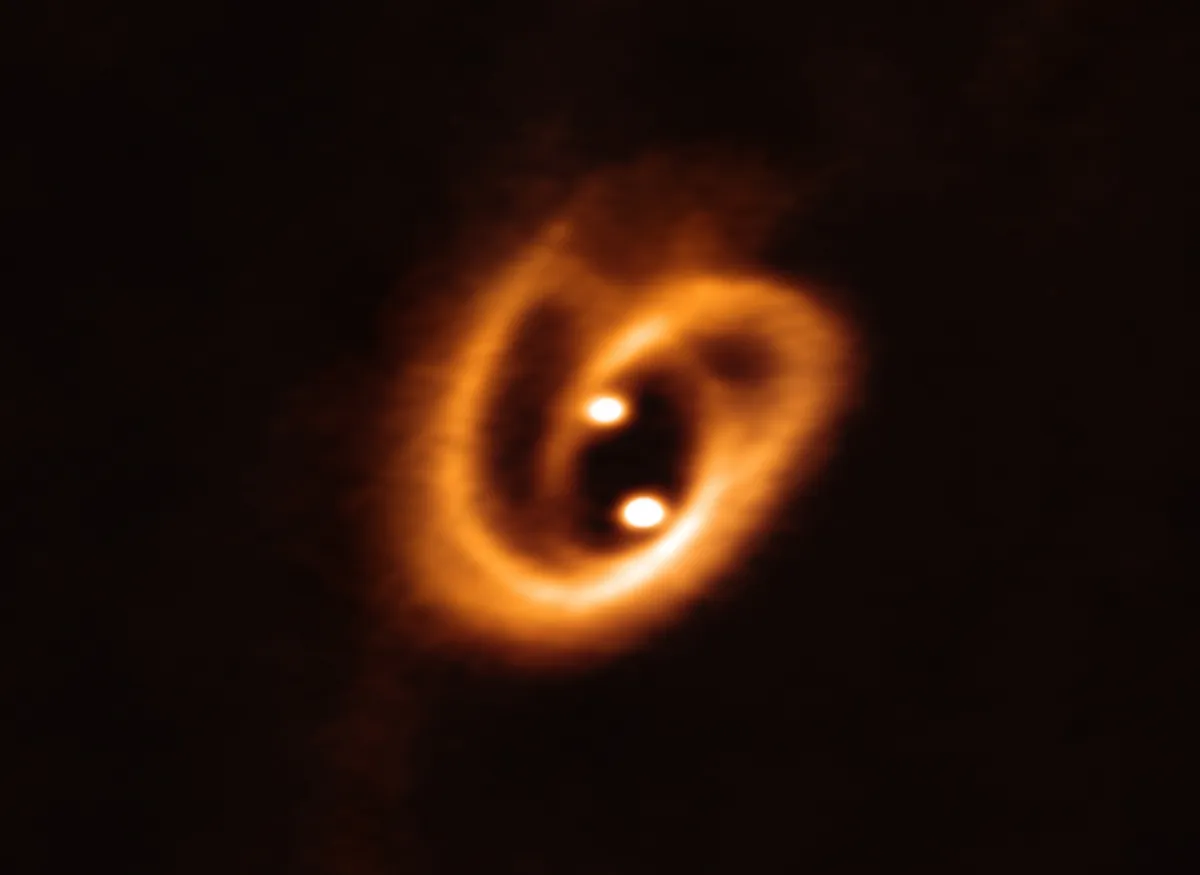
Astronomers have spotted two young stars growing within a complex network of cosmic dust and gas.
In the image above, the two points of light are thought to be circumstellar discs surrounding the pair of stellar newborns.
The cloudy swirls surrounding the two sources represent a network of gas and dust that is feeding the process of star formation.
Each of the discs surround the stars is similar to the Asteroid Belt in our own Solar System, and the space between them is 28 times the distance between Earth and the Sun.
Stars form when pockets of gas and dust collapse under their own gravity and begin to coalesce more and more of the surrounding cosmic material.
What’s left is a disc of gas and dust that surrounds the young star and continues feeding its growth.
Out of this circumstellar disc, more gas and dust may coalesce again in smaller pockets and eventually form planets surrounding the star.
The phenomenon being observed here could one day end up as Solar System like our own.
Image stats
Observatory: ESO Atacama Large Millimeter/submillimeter Array
Release date: 4 October 2019
Credit: ALMA (ESO/NAOJ/NRAO), Alves et al.
